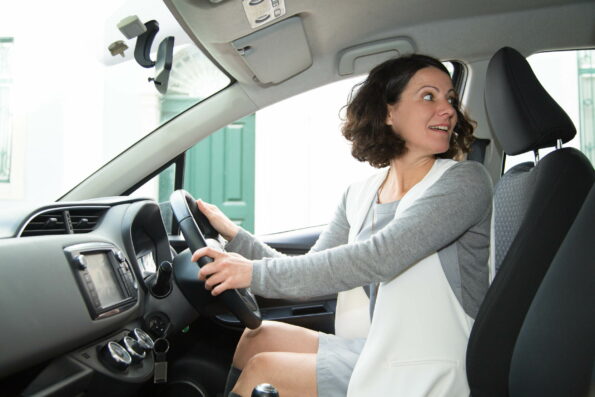If all your forward gears suddenly fail, or you decide that you simply want to travel everywhere in reverse gear, are you allowed to do it on the road? Is it even a good idea?
The law actually forbids you from driving any further in reverse than is reasonable, and only when it’s safe. But assuming the law permitted you to drive a long distance in reverse, is it practical?
The driving position would quickly become tiring as you would need to turn around to see where you are going. The position of the rear pillars and the size of the rear window would create much larger blind spots than when you are driving forwards. Shorter drivers driving a car with a high rear window would have a significant blind spot behind the vehicle that could extend quite a distance. Your wing mirrors would be useless because they would face in the direction you’re travelling rather than behind you, so you would find it difficult to change lanes and manoeuvre.

Your lights would be useless, confusing and annoying. At night, you wouldn’t be able to illuminate the road ahead, but drivers behind you would be blinded by your headlights. Anyone driving up quickly behind you could be confused into thinking that you are on the wrong side of the road, or they are on the wrong side of the road.
If you have an internal combustion engine (i.e. one that runs on petrol or diesel), travelling in reverse means that no air will be flowing over the radiator fins, which means less cooling. The engine fan will be on all the time to keep air flowing. Driving with your exhaust facing the wind means positive pressure into the exhaust pipe which will reduce engine power; the engine won’t be able to breathe as freely.
Cars are designed to cut through the air when travelling forwards, not backwards. Driving in reverse will cause increased fuel consumption because the coefficient of drag will be higher.
In reverse gear, a car is only capable of reaching perhaps 50km/h at the redline of the rev counter; it’s the equivalent of first gear, but in reverse. In stop/start traffic in the city, this is less of an issue, but on the open road you would become a slow-moving hazard for other drivers to negotiate.
A car’s steering is set up so that it tracks nicely and autocorrects to the centre when travelling forwards. This is not the case in reverse. Small changes to the steering in reverse can lead to a pendulum effect which will result in a spin.
Brakes are set up to be more powerful on the front wheels as that’s where the weight is when braking while driving forwards. Having more brake bias on the trailing brakes (in this case the front wheels), it will lead to those wheels locking up before the leading brakes (i.e. the rear wheels). A car’s front wheels usually have bigger brake discs than the rear wheels for that reason – they need to dissipate more heat. ABS might stop the wheels from locking, but there still might not be enough braking performance to stop you from high speed, plus the brakes will fade quickly.
